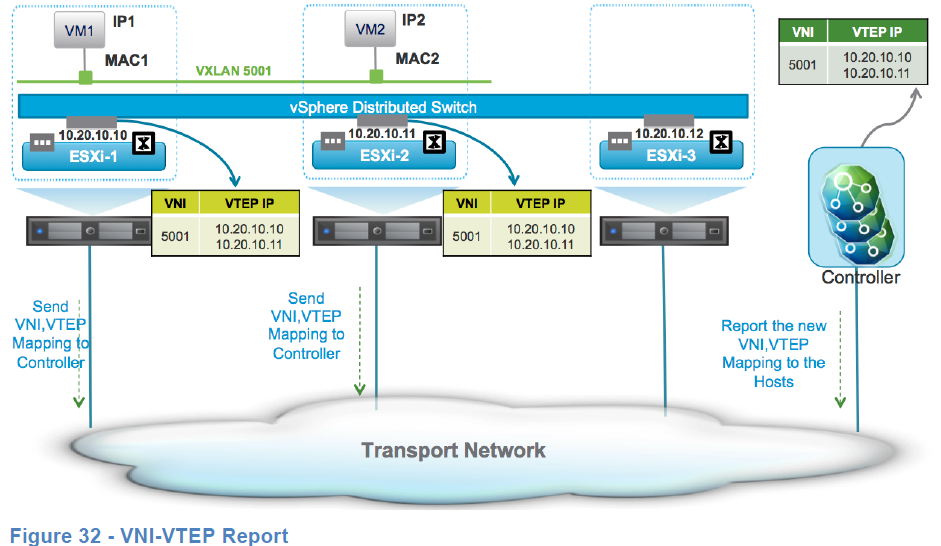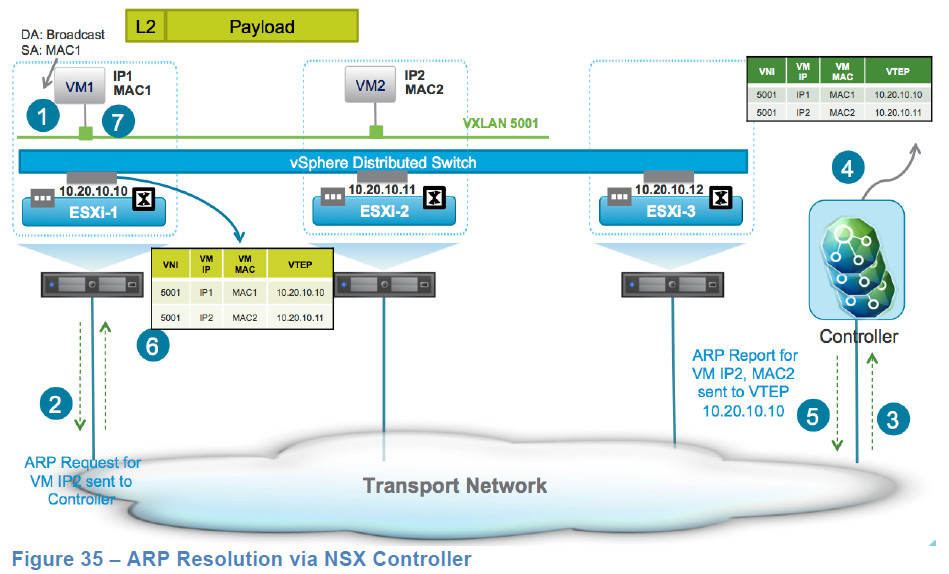For VXLAN to work, you would need to have MTU 1600 end to end from ESXi in West DC to ESXi in East DC and this includes the ISP in the middle.
The network device in the ISP need to be configured for MTU 1600 at the minimum.
There is VNI/VXLAN Network Identifier which is Segment ID and in your case is 5002
There is also VTEP IP address which is a VMkernel interface in ESXi.
This VTEP IP address across ESXi hosts (same site or different site) can be in different network.
The requirement is to have end to end MTU 1600 reachability
These VTEP IP addresses is assigned when NSX Admin configures VXLAN on the vSphere cluster.
This can be a statically assigned IP Pool (admin defines a range of IP Pool for the VTEP) or provided by DHCP.
Depends on what Replication Mode/Control Plane Mode are you using; when NSX Controllers are exist, ESXi hosts send VNI & VTEP information to NSX Controller which also known as VTEP report. The NSX Controller then sends a copy of this VTEP report table to each VTEP (ESXi hosts).
See below diagram

The NSX Controller also handle MAC table report. Similar to VNI, each ESXi hosts will send a copy of every learned MAC address in each VNI segment to the NSX Controller which also known as MAC report. The MAC report includes the VNI, MAC address and the VTEP IP that reported it.
No with this information, the ESXi hosts know which VTEP (ESXi host) has which VM (IP & MAC), see an example of MAC table report on ESXi-1 from below diagram.
Based on the table, if VM1 need to communicate with VM2, ESXi-1 need to send the packet to VTEP 10.20.10.11.

The diagram is taken from the VMware® NSX for vSphere Network Virtualization Design Guide ver 3.0
To understand more about this, read section 4.2 in the design guide